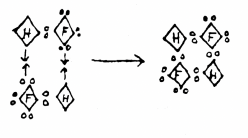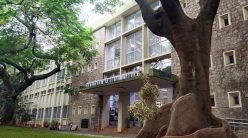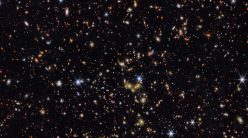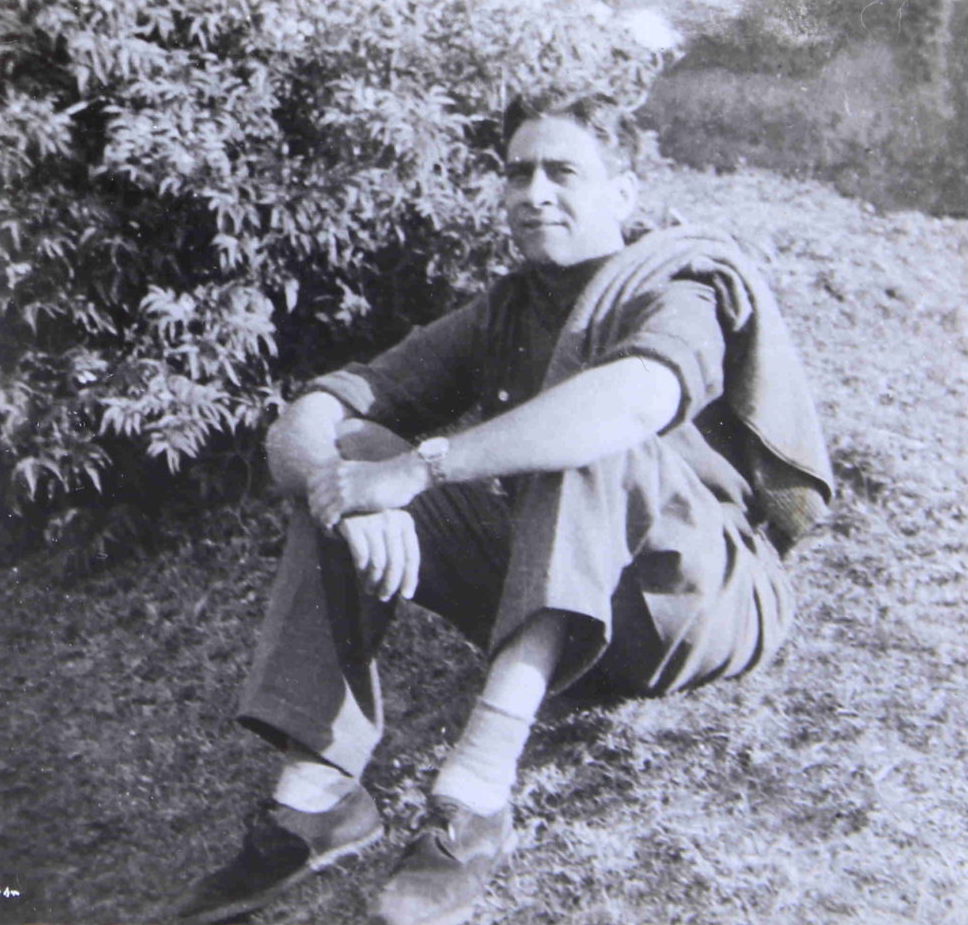
Malgudi, RK Narayan’s idyllic setting for his stories, may have been inspired by the Mysore of a bygone era, but its name is a felicitous blend of two of Bangalore’s oldest suburbs – Malleswaram and Basavangudi. Even in the 1970s, when I first arrived in the city, these areas retained an old-worldly charm. Few could have foreseen the city’s transformation at that time, although the foundations were already in place.
Bangalore, now slowly metamorphosing into Bengaluru, the erstwhile princely State of Mysore, and the State of Karnataka, occupy a special place in the history of science in India, especially as it developed over the 20th century. Jamsetji Tata’s vision of a modern research institution in India was formally realised in 1909 when the Indian Institute of Science (IISc) was established on a large campus generously gifted by Krishnaraja Wodeyar, the Maharaja of Mysore. Over the next hundred years, Bangalore became the major centre of academic science in India. Delhi may have more institutions, Mumbai may be home to two of India’s most important institutions created by Homi Bhabha – the Tata Institute of Fundamental Research and the Bhabha Atomic Research Centre – and Kolkata may have been the epicentre of the intellectual renaissance in the first three decades of the last century (when it was still Calcutta), but it is really Bangalore that has anchored much of the activities that we associate with the growth of science and technology in India.
Does not the ambience of a city contribute to the flowering of talent at points in history? Budapest, a city often brutalised by the European political upheavals of the 20th century, is a notable example. From the banks of the Danube emerged the creative geniuses of the turbulent decade of the 1930s – Leo Szilard, John von Neumann, Eugene Wigner, Edward Teller, Dennis Gabor, Theodor von Karman, Michael Polanyi and Albert Szent Gyorgi among them (V Smil, Nature, 2000, 409, 21). CP Snow’s charming collection of reflections on men of substance, Variety of Men, introduces in simple and elegant prose some of the men who dominated the English, or more accurately the Cambridge and London, scene in the eventful years between the 1920s and the 1950s. In these pages are some of the most readable accounts of famous men such as the physicist Ernest Rutherford, who presided over the dawn of the atomic age; the mathematician GH Hardy, remembered as much for his reflective prose as for his discovery of Ramanujan, and the incomparable HG Wells, unhappy in his last days at his exclusion from the Royal Society.
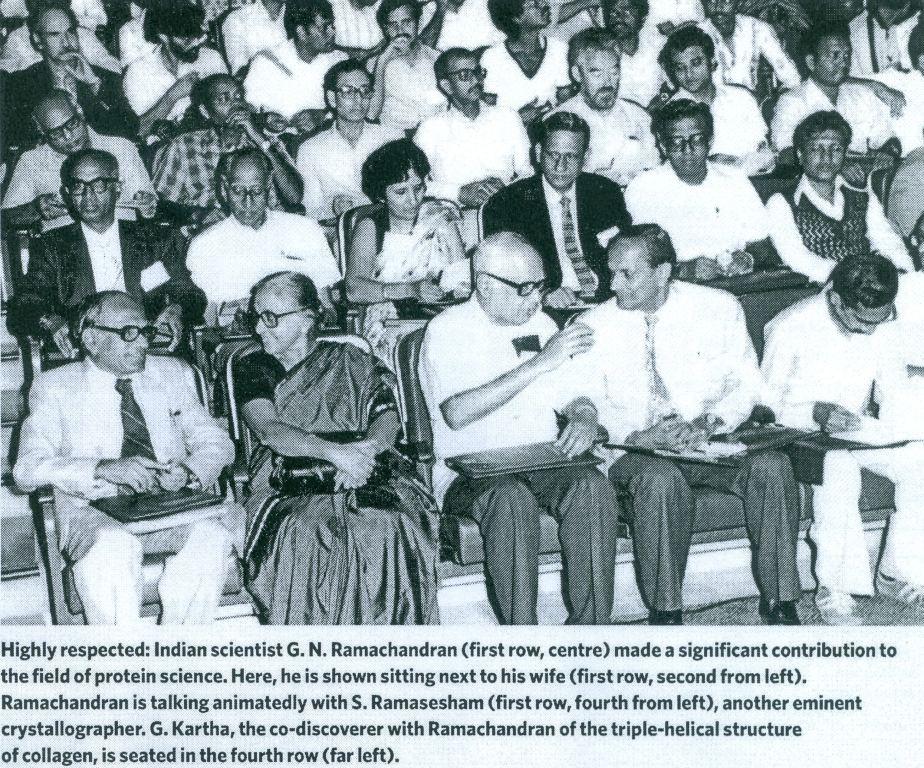
In India, the Kolkata of the 1920s and the 1930s must stand as a magnificent example of the link between ambience and intellectual discovery. For a brief period, in those two decades, Kolkata was home to Jagadish Chandra Bose (1858-1937), Prafulla Chandra Ray (1861-1944), Rabindranath Tagore (1861-1941), CV Raman (1888-1970), Meghnad Saha (1893-1956), Satyendra Nath Bose (1894-1974) and Prasanta Chandra Mahalanobis (1893-1972). As a bystander watching the scientific scene in Bangalore between the 1970s and the end of the 20th century, I had the privilege of seeing, hearing and interacting with many individuals who greatly influenced their surroundings. In attempting to imitate Snow, I asked myself: “Can I write about the famous men of science whom I have seen in Bangalore over these decades?”
For many years I contributed a fortnightly column to the journal Current Science, often penned in haste in the stillness of the night. In some of them I reflected on men I knew and quietly shed a tear at their passing. It is these men I would like to remember again, a quartet of great distinction who represent the many facets of the growth of science in Karnataka and in India. Satish Dhawan (1920-2002), Sivaraj Ramaseshan (1923-2003), GN Ramachandran (1922-2001) and H Narasimhaiah (1920-2005) were indeed “great contemporaries” (a term I borrow, unabashedly, from the title of Winston Churchill’s book) who were all born in the early 1920s and who left us between 2001 and 2005. They were men of varied backgrounds and widely differing temperaments, but they shared a deep and abiding commitment to the cause of promoting science in India.
Satish Dhawan: Institution builder
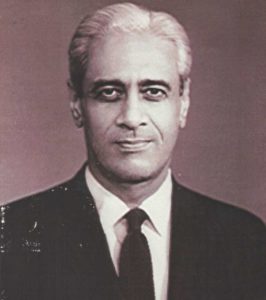
When Dhawan made his entry into the IISc in 1951 as a member of the Aeronautical Engineering Department, the institution was entering a comfortable state of middle-aged somnolence. He rose dramatically to become its director in 1962 at the remarkably young age of 42. When he formally retired in 1981 he left an institution that had grown enormously in size and scope and was arguably the pre-eminent institute of science in the country, comparable with many in the developed nations of the West. Legend has it that Dhawan entered the institute as an extraordinarily dashing young man. I saw him when he left it, a remarkably handsome and distinguished figure exuding a quiet charm that was uniquely his. In this period he transformed the academic structure of the institute, moving it from a feudal departmental structure presided over by a single, powerful and most often, inhibitory professor to a more collegial model that promised the prospect of collective decision-making on academic matters.
During his long innings as its director, Satish Dhawan gently and, at times, unobtrusively guided the transformation of an established academic institution; a formidable task that required a clear vision, a firm resolve and an ability to persuade recalcitrant academics to tread a new path. Experience tells us that in our surroundings, when old institutions begin to falter, it is easier to contemplate setting up new ones; the hope is that this strategy sidesteps the difficult problem of effecting reform and change in institutions with set traditions.
Dhawan’s administrative achievement at the IISc has faded into obscurity, dimmed by the lustre of his achievement in building up the Indian Space Research Organisation (ISRO) into the formidable undertaking it is today. Dhawan’s ability to attract men of unique and varied talents and his role in shepherding the two organisations he headed during this phase of explosive growth, a period that coincided with the development of mechanisms for large-scale funding of academic science, must surely rank as one of his finest achievements. The IISc’s focus on research, nurtured carefully by Dhawan, deepened in later years, providing an institutional ambience that was clearly distinct from other institutions.
Dhawan’s ability to build an organisation whose success relied on teamwork, discipline and collective dedication was truly remarkable
Dhawan’s love for Bangalore and his attachment to the institute led inevitably to the choice of this city as the headquarters of ISRO. Vikram Sarabhai’s untimely death in 1971 catapulted Dhawan into a dual role, heading both ISRO and the institute for a decade. The space programme has had a wonderfully romantic history, with Satish Dhawan as the guiding force; in times of failure he shouldered responsibility, in the heady days of success he stood quietly on the sidelines.
Dhawan’s ability to build an organisation whose success relied on teamwork, discipline and collective dedication was truly remarkable, particularly when one recognises that he was simultaneously guiding an institution such as the IISc, where individuality and idiosyncrasy were cherished qualities.
My view of Satish Dhawan is necessarily circumscribed by the limited perspective from which I saw him. For a man of many facets, any historical assessment must, of course, come from a scholarly study of his life and times. But, at the distance from which I viewed him, separated by the gulf of age, position and discipline, Dhawan was a man who engendered immense respect by his grace of conduct. There was a shy air of reticence about him, uncommon in men who have experienced power and distinction.
S Ramaseshan: Man of uncommon talents
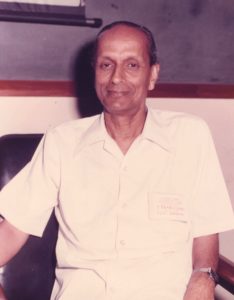
Sivaraj Ramaseshan, who succeeded Dhawan at the institute, was an engaging personality and a man of uncommon talents. In a career spanning over half a century, Ramaseshan carried out front-line research in physics and materials science. Optics, crystallography and high-pressure physics were among the disciplines where he made decisive and influential contributions.
But he was far more than a researcher, lost in the technicalities of his chosen discipline. Ramaseshan was a builder of groups, institutions, scientific organisations and academies. He was the prime architect of a movement to enhance the prestige, visibility and content of scientific journals published from India. He was among the foremost popularisers of science in this country. To every sphere of his diverse activities Ramaseshan made a distinctive and lasting contribution. Ramaseshan was incurably romantic about science.
Growing up in the heady days of the freedom movement and entering research in the early 1940s under the tutelage of his legendary uncle, CV Raman, had an indelible impact on the youthful Ramaseshan. His academic career began at the IISc, where he worked for his doctoral degree and as a member of the faculty of the physics department in the 1950s and the early 1960s. He was to return nearly two decades later to serve as the institution’s joint director (1979-81) and director (1981-84).
In the intervening years, he established the physics department at the Indian Institute of Technology Madras and the Materials Science Division at the National Aeronautical Laboratory (NAL, now the National Aerospace Laboratories). The world-class materials programme he built at NAL has been a critical element in the development of indigenous capabilities in aerospace research.
His personal research contributions, most notably his early work on anomalous dispersion methods in crystallography and his later research on condensed matter physics and materials, were characterised by deep physical intuition and a unique ability to see the heart of a problem. But, most remarkably, Ramaseshan was to make the most significant contributions to many institutions at a time when his formal academic career drew to a close.
In a career spanning over half a century, Ramaseshan carried out front-line research in physics and materials science
In 1973, Ramaseshan was the motivating force in launching the physics journal Pramana, published by Indian Academy of Sciences. In 1978, he wrote at length on the problem of scientific journals in India. In a paragraph that will find many echoes today, he asked: “Can our journals help to produce an intellectual ferment so that the highest quality of science is produced in this country?” He added: “This can be done only if the culture of science is made to percolate deeply into the community. Only then can this metamorphosis take place. Can we help to revive our dying universities? Can we help our bright young students to pursue the excitement of creative science?”
In 1989, Ramaseshan took over the editorship of Current Science. The journal, founded in 1932, had an illustrious past as a widely read interdisciplinary science journal. But it had fallen on hard times. Diminished circulation and decreasing visibility in India were problems Ramaseshan had to contend with. He brought to the task of rejuvenating Current Science a remarkable sense of purpose and boundless optimism.
In reflecting on the life and times of Ramaseshan, I am drawn inevitably to two of his great contemporaries, GN Ramachandran and Satish Dhawan. For a brief period, in the transition years between the 1970s and 1980s, all three were at the IISc. They were three entirely different personalities, but they all bore the indelible stamp of greatness, collectively contributing to the growth of our science and our institutions.
With Ramachandran, Ramaseshan shared deep interests in optics and crystallography. With Dhawan, he shared an abiding commitment to building and fostering the institutions on which this country’s progress depends. When CV Raman died in 1970 he left three institutions: the Raman Research Institute, the Indian Academy of Sciences and the Current Science Association – all of which he had presided over for long periods of time. In the years that followed, Ramaseshan, more than anyone else, ensured that these organisations acquired a new and distinctive character which would ensure a bright and robust future.
GN Ramachandran: Brilliant mind
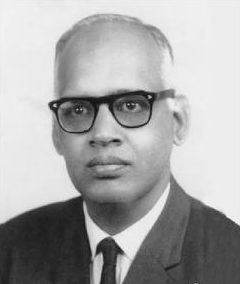
GN Ramachandran was undoubtedly one of the most remarkable men I have ever met. He was everything I had always imagined a creative scientist to be; brilliant, temperamental, unpredictable and childlike. When he died in Chennai on 7 April 2001, the curtains came down on one of the most remarkable chapters of modern science in India. Ramachandran began his journey in science when he joined the IISc in 1942 as a student in the electrical engineering department. He realised very quickly that his interest lay in physics, a subject then overwhelmingly dominated by the presence of CV Raman.
In retrospect, it appears almost inevitable that Ramachandran would desert electrical engineering and embrace physics; an event that appears to have been accompanied by Raman’s soothing words (possibly apocryphal) to the professor of electrical engineering: “I am admitting Ramachandran into my department as he is a bit too bright to be in yours.” Ramachandran was to eventually become the most distinguished of Raman’s students. In Bangalore, he first submitted a thesis titled “Optics of Heterogeneous Media” for an MSc degree of the University of Madras and later a doctoral thesis in 1947, which contained some of the earliest applications of X-ray diffraction to the study of crystal perfection.
He spent two years in Cambridge, obtained a PhD working with WA Wooster, and returned to Bangalore in 1949 to begin an independent career as an assistant professor of physics, working in the X-ray diffraction laboratory that he was instrumental in building as a student. He did not stay long. The University of Madras beckoned with a professorship and the responsibility to head the department of physics. Ramachandran moved to Madras when he was just 30 to begin an extraordinary burst of scientific activity.
In Madras, he flourished under the benign and supportive influence of an enlightened Vice Chancellor, A Lakshmanaswami Mudaliar; the relationship was reminiscent of that between Ashutosh Mukherjee and CV Raman in Calcutta. The determination of the structure of the protein collagen (1954-1955) and his seminal contribution to the field of polypeptide and protein structures (1963) remain major milestones in the history of structural molecular biology and must rank as the finest examples of scientific research in post-independence India.
Ramachandran had the remarkable ability to cut through unnecessary details and go straight to the heart of a problem. This quality, coupled with formidable physical insights and mathematical skills, allowed him to make many important contributions in biophysics and crystallography. He was widely honoured for his work in India and abroad. A dispassionate analysis of his life and work reveal that he did not, in large measure, get his due. But his active career was all too brief by modern standards. For the last 20 years of his career, Ramachandran was not really visible internationally, reminding us of one of the ironies of modern science; achievement alone is not enough, packaging and marketing play an important role.
He was everything I had always imagined a creative scientist to be; brilliant, temperamental, unpredictable and childlike
In India, where administrative positions are often considered a mark of scientific success, Ramachandran was essentially an “outsider” to the establishment. We have yet to learn that idiosyncratic personalities often make the most original contributions to science. Ramachandran did all his work in India, following in the footsteps of his mentor, CV Raman. In the 1960s and the 1970s he did travel regularly to the United States, to the University of Chicago where he held a visiting professorship. In Madras, Ramachandran’s work brought an unprecedented level of recognition to the university. The two international conferences he organised in 1963 and 1968 brought to Madras some of the most famous names in molecular biology and biophysics.
Ramachandran returned to Bangalore to set up the molecular biophysics unit at the IISc in 1971. His move from Madras was catalysed by the deteriorating academic atmosphere of the university. Indeed, Ramachandran’s two decades at the University of Madras clearly showed that the highest levels of research could be practised within our university system. His departure signalled an impending change. We have all watched, with varying degrees of helplessness, the steady decay of science at the university level in India over the last few decades. In Bangalore, in the period between 1971 and 1979, Ramachandran fashioned a new department, which has since grown into a major centre of structural biology.
Like many extraordinarily gifted individuals, Ramachandran often had an uneasy relationship with his surroundings. It was not easy for him to tolerate mediocrity. Elevated to the formidable position of head of department at 30, he grew to be isolated from his colleagues, rarely establishing the easy academic relationships that make science a pleasure. But even at the height of his career, Ramachandran most enjoyed scientific discussion; unfortunately, his surroundings could rarely rise to the levels he demanded. His last years were troubled. Ramachandran has left behind a rich scientific legacy. His achievements will serve as a source of inspiration for generations to come. Ramachandran was undoubtedly one of the most outstanding scientists of our country and truly a jewel in the crown of India’s science.
H Narasimhaiah: A life in science
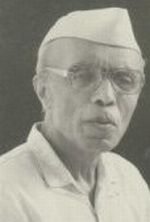
Of the men I have chosen to remember, H Narasimhaiah (HN to his legion of admirers) is in many ways the most remarkable. He was not a scientist or an academic administrator in the conventional mould. He was at all times the most tenacious promoter of science education that I have met, totally dedicated to his cause. According to legend, he walked to Bangalore in 1935 to join the National High School in Basavangudi. A year later, Mahatma Gandhi, on a visit to Bangalore, spoke to the young Narasimhaiah – a meeting that was to transform the boy into becoming a lifelong follower of Gandhi’s ideals. He obtained his BSc and MSc degrees from Central College, Bangalore, and joined National College, Basavangudi, in 1946. His career was interrupted by stints in prison at the Bangalore, Mysore and Yerwada jails during the Quit India movement. Later, he was to obtain a PhD in physics from Ohio State University. He served for several years as principal of National College and was later Vice Chancellor of Bangalore University (1972-1977).
During his long career as an educationist, HN remained completely committed to Gandhian ideals and the cause of promoting science and spreading a scientific temper among the people at large. He lived a life of extraordinary simplicity. A bachelor, he spent over half a century in a small room at the National College hostel. Always dressed in white khadi with a “Gandhi cap”, he seemed at times a figure from a chapter of Indian history that appears to be fading fast from public memory. His contributions to the National Education Society and its institutions were undoubtedly immense, but I believe it is his indefatigable championship of the cause of promoting science that really extended his influence well beyond National College.
I first met HN in the mid 1970s when I was invited to speak at the Science Forum, probably as a substitute for a truant speaker. Young, brash and undoubtedly arrogant, I encountered an entirely new world at National College. Simplicity and humility seemed to be prized virtues. Ever since, I have gone back repeatedly, never refusing an invitation to speak.
He was at all times the most tenacious promoter of science education that I have met, totally dedicated to his cause
I have often wondered at the gulf that separated my own concerns at the IISc from those of HN and his colleagues at National College. I seemed more worried about personal advancement and success; HN and his dedicated followers appeared to be driven by a nobler purpose. The Science Forum, for over three decades, has also conducted an “Annual Science Festival”, where lectures and film shows on science are held every day in the month of July. Year after year, some of Bangalore’s most senior and influential scientists spoke at this festival, drawn undoubtedly by HN’s personal charm and charisma. It was almost impossible to say no to him, although it was sometimes possible to negotiate on the date of a lecture. The last time I saw him was in July 2004 at the Science Festival. He had telephoned me in early June and announced simply: “July is coming.” He noted that it was the 50th anniversary of GN Ramachandran’s famous paper on the structure of collagen and suggested that I talk about Ramachandran and his contributions. I readily agreed since the topic was close to my heart. He was present, as always, at the Science Forum, frail and weakening but still determined to introduce the speaker. Before the talk, he offered me the Forum’s famed coffee, lukewarm and in a small cup which had seen better days, in surroundings simple enough to shame even the most insensitive. It was always a privilege to meet him.
Talking to him was both humbling and ennobling. But, on this occasion, it was clear that he was fading. My one regret is my crippling inability to converse in Kannada, a language HN loved and used so effectively. Separated by barriers of age, lifestyle and language, I could only admire him from a distance, coming away enriched and inspired by every visit to the Science Forum. Narasimhaiah died almost exactly 57 years after his idol, Mahatma Gandhi. Throughout his life, HN pursued the apparently contradictory visions of a Gandhian ideal and the task of promoting the public understanding of modern science. His formidable discipline, commitment and asceticism set him apart from the rest of us. Like Gandhi, he was an easy man to admire but difficult to follow.
In Dhawan, Ramaseshan, Ramachandran, and Narasimhaiah, Bangalore had a formidable line-up of men who dominated the scientific landscape of the city for a long period. They were contemporaries in every sense but were uniquely distinct in their interests and styles. They were all completely dedicated to the cause of science in India, their commitment undoubtedly influenced by the fact that the prime years of their youth coincided with the heady period after Independence, which was dominated by the compelling vision of a resurgent India. They played full and magnificent innings, which bear retelling in the years to come. At a time when science in India needs fresh inspiration, we can do no better than remember them.
P Balaram is Professor Emeritus and a former Director of the Indian Institute of Science, Bengaluru. He was the editor of the Indian scientific research journal Current Science from 1995 to 2013.
This piece was first published on 9 June 2017 in Frontline.


